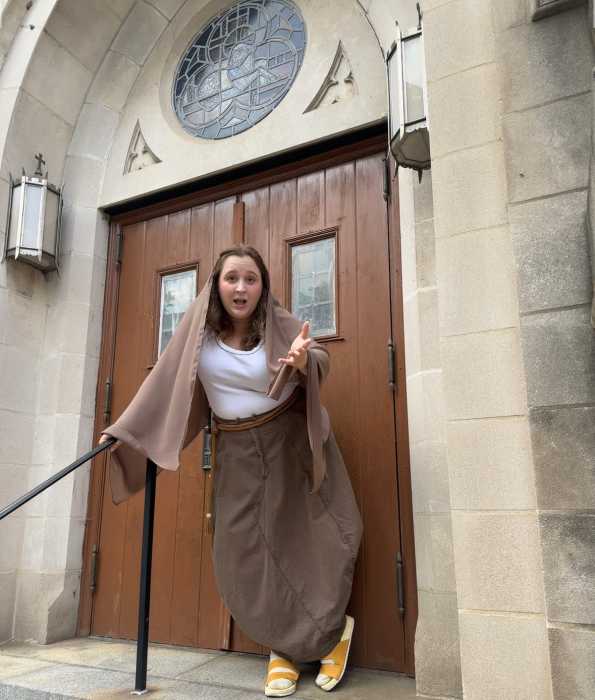Vincenç Altaio in Albert Serra’s “Story of My Death.” | M’AIDEZ FILMS
Love it or hate it, you can say one thing about Catalan director Albert Serra’s “Story of My Death”: vampire films don’t get much further from “Twilight.” Dracula appears here, but no sparkly seducers are on the scene.
In an American context, almost anything that offers an extreme alternative to our culture’s assembly line of comic book adaptations and superhero movies is bound to look progressive. However, Serra’s take on the European art film is actually rather backwards-looking and borderline retro. “Story of My Death” draws on Pier Paolo Pasolini’s “Trilogy of Life” series (particularly in its scatological frankness), Jean-Marie Straub and Danièle Huillet’s austere literary adaptations, and even Stanley Kubrick’s “Barry Lyndon.”
Its central conceit — having a real historical figure meet a literary one — isn’t entirely new, but it’s still relatively fresh. Even so, it fails to do more than set up an encounter between two seducers, Casanova and Dracula. The latter comes off worse. Are you surprised?
Albert Serra’s vampire outing likely to leave audiences cold
The film starts off with Casanova (Vincenç Altaio) and his servant in Switzerland. They attend an outdoor party, then the infamous womanizer gets the idea to write his memoirs. (They were published posthumously and became a bestseller.) But mostly he and his servant sit around talking, although they do take a trip to the Carpathian Mountains. About halfway through “Story of My Death,” Dracula (Eliseu Huertas) is introduced. He has no problem with daylight and spends his time sucking the blood of local women, with whom both he and Casanova are infatuated.
It’s possible that if “Story of My Death” could have been shot on 35mm film, my problems with it would be lessened. Serra rarely moves the camera. In bright scenes, the cinematography is extremely grainy. But most of the film, particularly in its second half, takes place at night. Those segments look murky. As far as I can tell, Serra shot the film with natural light — it would go along with his use of non-professional actors and partially improvised dialogue — but instead of achieving the candlelit beauty of “Barry Lyndon,” he’s made a remarkably unattractive-looking film.
Unlike films such as Philippe Grandrieux’s “Sombre,” in which rape and murder take place in an inky darkness that leaves them up to the spectator’s imagination, there seems to be no point to the muddy look of “Story of My Death.” It’s just cheap and ugly. Serra would be better off spending his budget on a more expensive video camera next time around.
Serra’s film never feels like it needed to run for 145 minutes. The best long films, even extreme examples like Béla Tarr’s seven-hour “Sátántangó,” create a universe where one can come to feel complicit with their characters, as though we’re sharing an experience alongside them. Nothing like that happens here. For all the earthiness of “Story of My Death,” the barrier between character and spectator remains firm. It’s like going to a particularly unusual historical re-creation site. It can wave shit in our faces all it wants and even talk about alchemy, but the process of turning dross to gold never happens.
The films that influenced “Story of My Death” managed to convey the feel and rhythm of a distant time. As in his first two features, which riffed on Cervantes’ “Don Quixote” and the New Testament, Serra is obviously trying to do the same here, but he doesn’t succeed. The film feels liveliest when it introduces more modern elements, like a drone-rock score. The problem is that “Story of My Death” winds up stranding the spectator in a rather boring locale. Numerous films have been inspired by Bram Stoker’s novel “Dracula”; despite some onscreen violence, “Story of My Death” must be the most bloodless yet.
STORY OF MY DEATH | Directed by Albert Serra | M’aidez Films | In Catalan with English subtitles | Nov. 20-26 & 28-30 | Anthology Film Archives, 32 Second Ave. at Second St. | anthologyfilmarchives.org



































